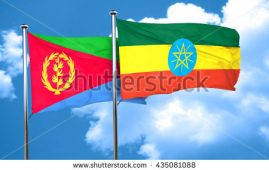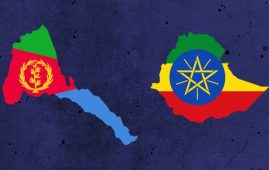Towards the end of last year, several weeks of fighting between the Gabra and Borana pastoralist communities living in northern Kenya led to the death of at least 15 people, the displacement of several thousand more, and the disruption of transport in the area around the town of Moyale. The fighting was apparently triggered by attempts to seize a grazing area. Police reservists in the area were also accused of using their weapons in support of their communities and over 170 of them were subsequently disarmed after Internal Security Minister, George Saitoti, said some had been behaving in a partisan manner. Extra police were drafted into the area in December but there was another wave of fighting at the beginning of the year after clashes broke out between youths attending a peace meeting. Several people were killed and dozens of houses burnt in several villages near Moyale. According to the UN Office for the Coordination of Humanitarian Affairs in Nairobi at least 46 people had died by the end of the first week in January. There was a brief pause in the fighting and then further clashes broke out in mid January. The continuing insecurity has meant that it has been impossible to collect accurate figures but by early February the Kenyan Red Cross estimated that some 9,500 families, nearly 60,000 people had been displaced, with over 60 killed and more than a thousand houses burnt, with crops and livestock as well as property being destroyed. The worst affected areas were the settlements of Heilu, Kinisa, Buthye, Bori, Mansile, Illadu, Manyatta and Odda. Education was also badly affected in Moyale with over half of the area’s 31 schools failing to reopen after the holidays.
Thousands of those affected by the clashes fled across the border into Ethiopia, and the numbers are now estimated at just under 30,000. Half of these people originally fled to Ethiopia earlier but had returned when the fighting had died down in January. Now they are back again, and according to a verification exercise conducted by the Disaster Risk Management and Food Security Sector and local authorities with assistance from the International Organization for Migration there are approximately 17,000 in Moyale woreda, Borena zone in the Oromia Regional State and another 11,000 in the Somali Regional State in Moyale woreda, Liben zone. Many of these are living with host families, but food, plastic sheets and household items have been sent to the area and are being distributed to the refugees.
While it appeared the main motivation for the violence was competition over land for grazing and livestock following last year’s drought in which the pastoralist communities lost large numbers of livestock due to lack of pasture and the drying up of water sources, the conflicts have also been linked to politics and to the upcoming general election in Kenya, expected later in the year. Kenya’s National Cohesion and Integration Commission said the conflicts “must be treated as electoral related and not dismissed as conflict over water, pasture and cattle rustling”. The Kenyan Red Cross also claimed the “trigger of the current conflict is allegedly competition over positions in the county government structures as designated in the new constitution and land-related issues.” This has apparently been the cause of similar inter-community violence in the neighboring region of Isiolo where there was an outbreak of violence in December between the Turkana and Somali communities. Several people died and several thousand more were displaced in three days of clashes. This week there was another series of clashes with reports claiming that “dozens” had died. One official was quoted as calling Isiolo “a war zone”.
This fighting between the Borana and Gabra is the first since the peace reached between the two communities in Ethiopia and in Kenya at the long series of meetings between elders held between 2004 and 2009 and finalized at Dukana, Maikona and Walda in mid 2009. Now, together with increased security in the area, the elders from both communities are making renewed efforts to re-establish peace. The Chairman of the Borana Council of Elders has said that the government should spearhead peace initiates but these must allow the crafting of home grown solutions: “local mechanisms need to be employed to solve the problems and local leaders must be involved in the process.” Local administrations and elders on both sides of the border are making renewed efforts to bring about peace between the two communities which straddle the border.
*****************
*This item first appeared on Feb. 17, 2012 issue of A Week in the Horn, with the titled ‘Clashes in northern Kenya displace thousands across the border’.
Check the Kenya archive for related posts.






1 Comment on this post
Comments are closed.
Leave a Comment